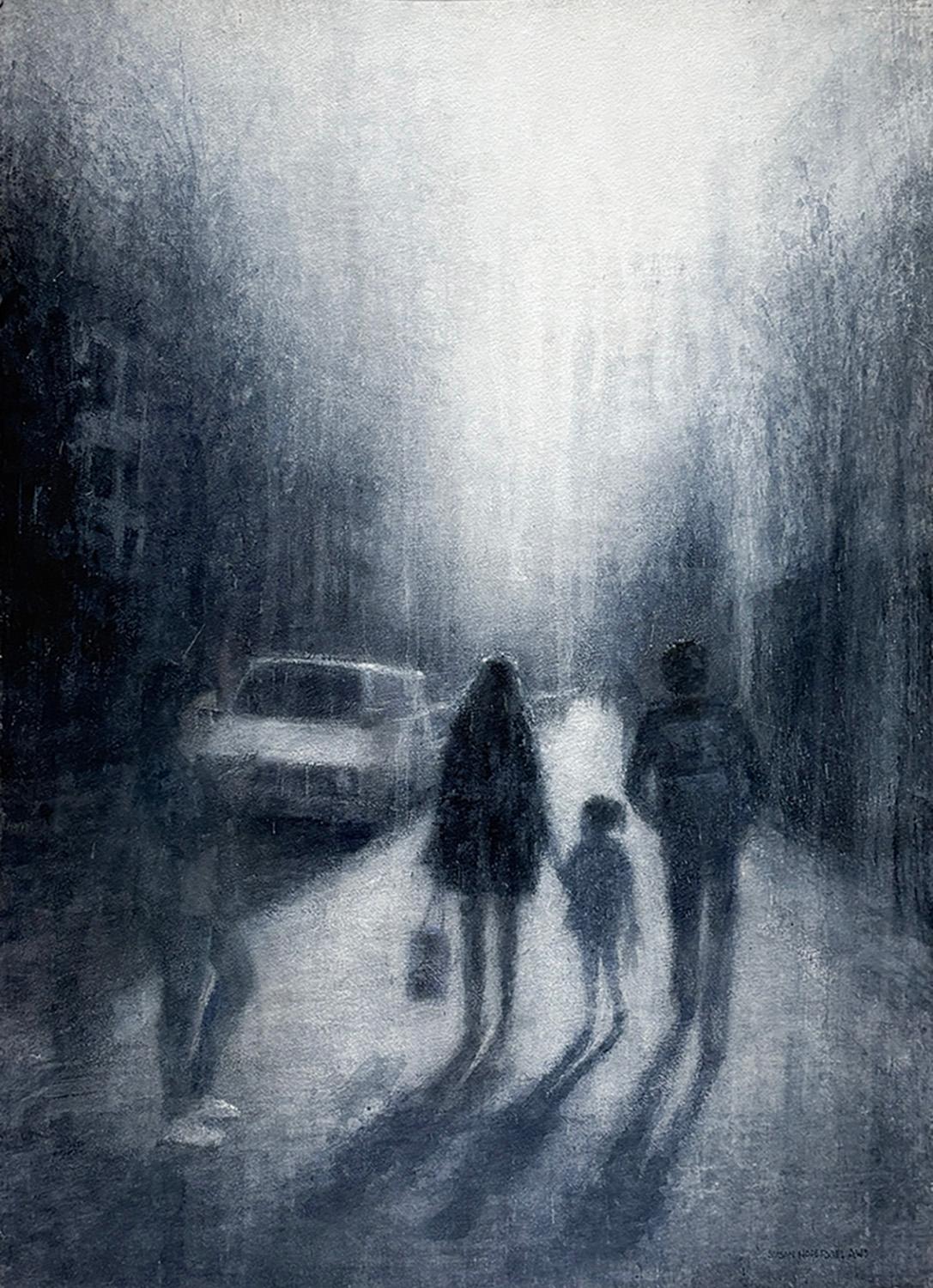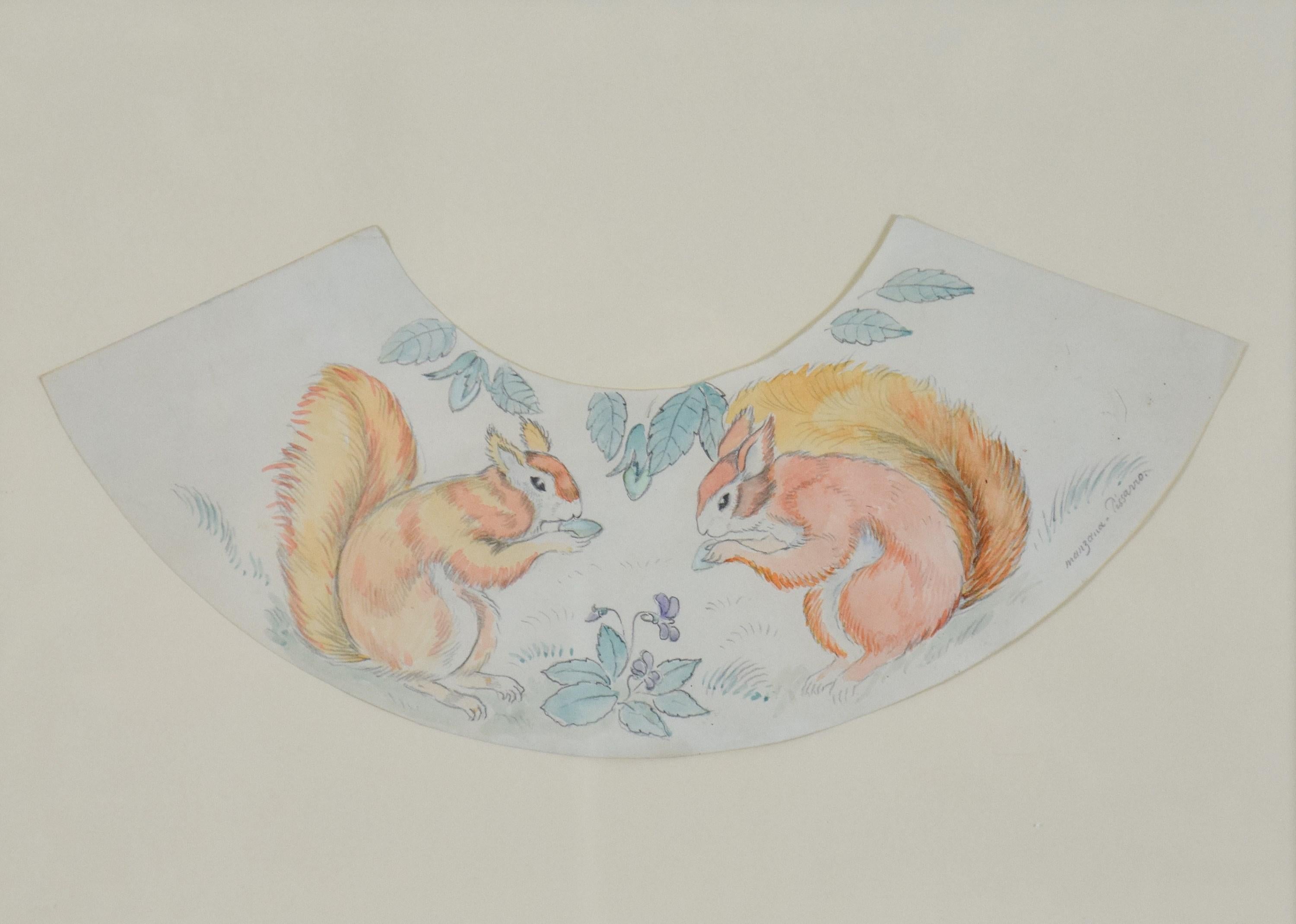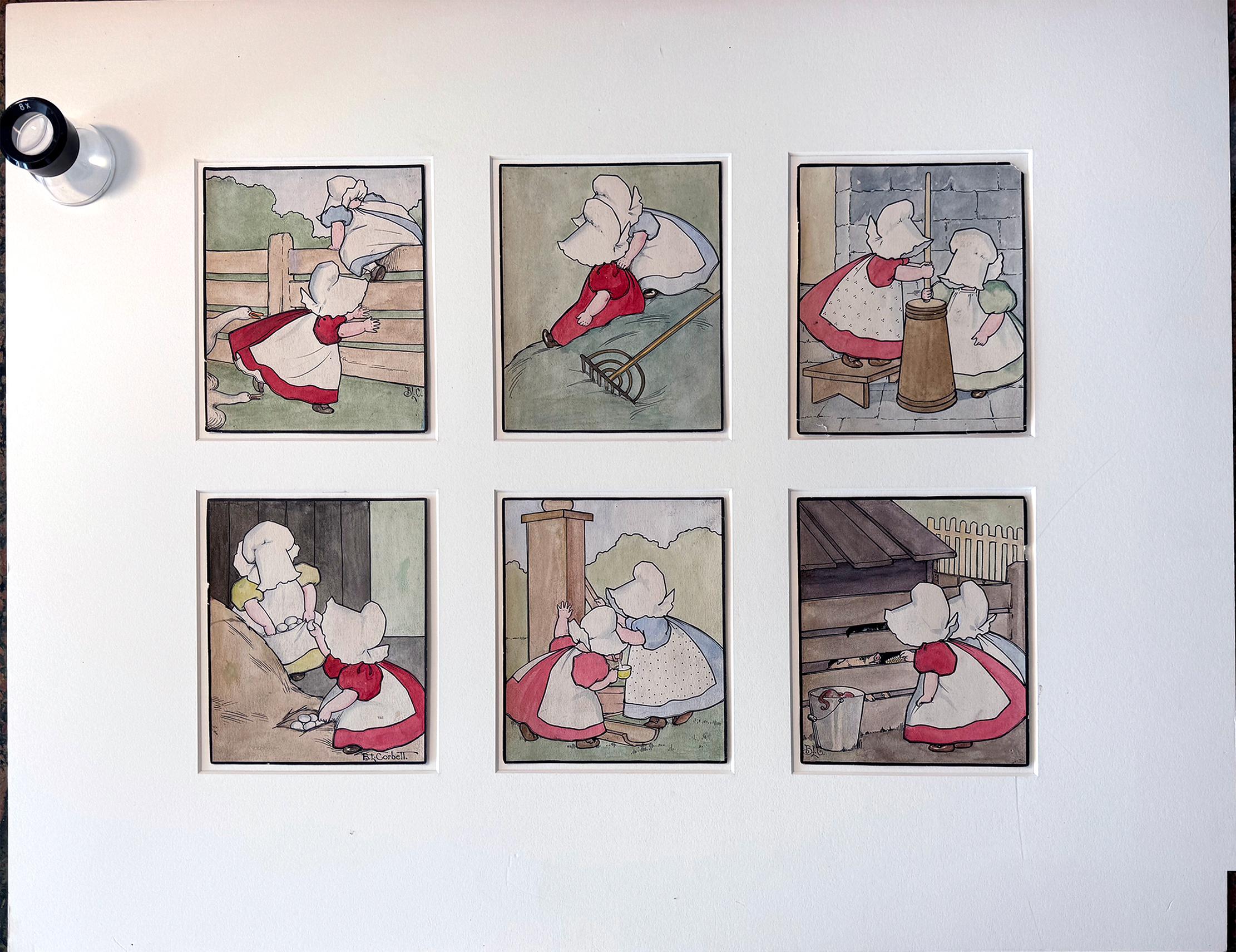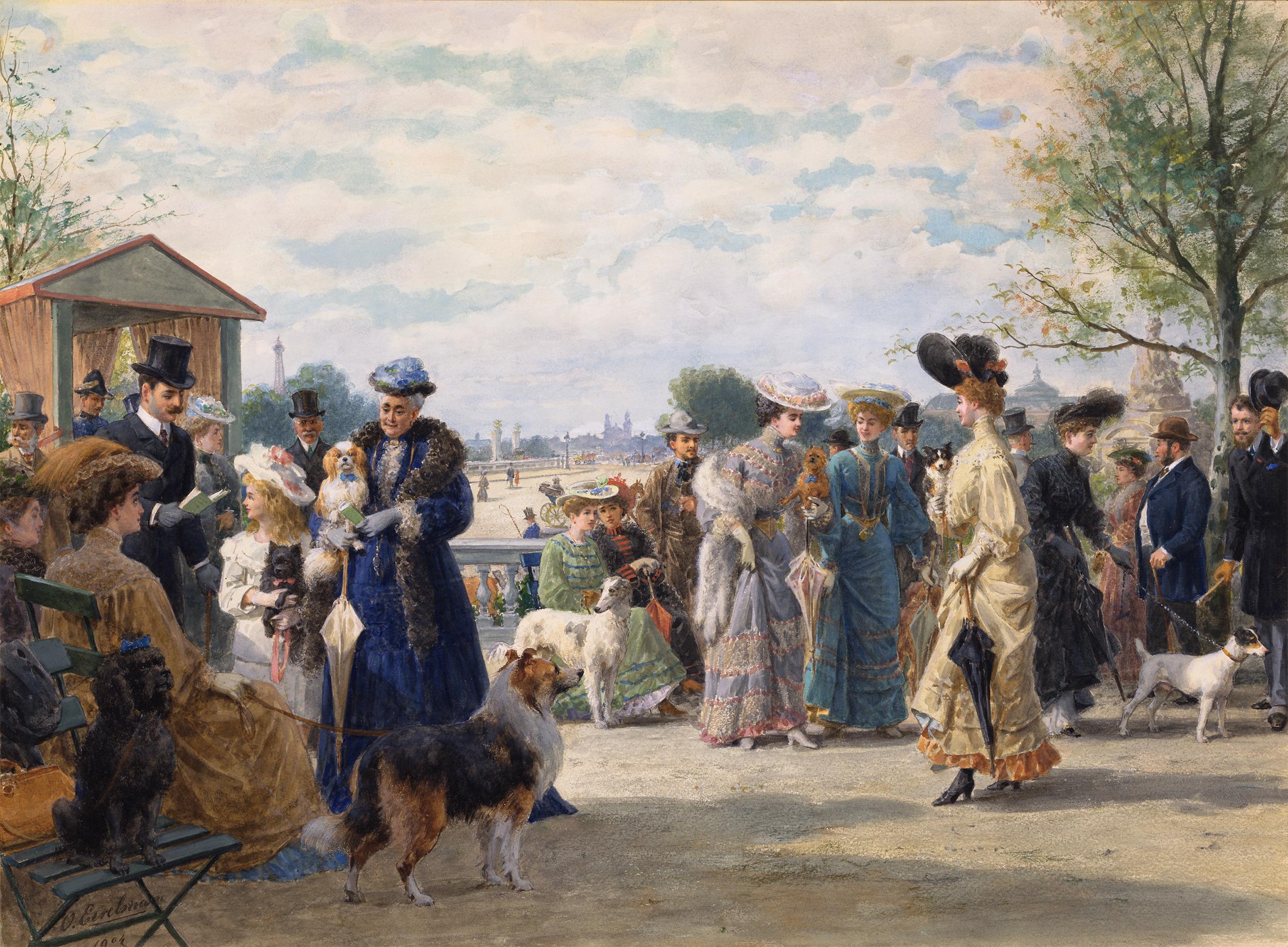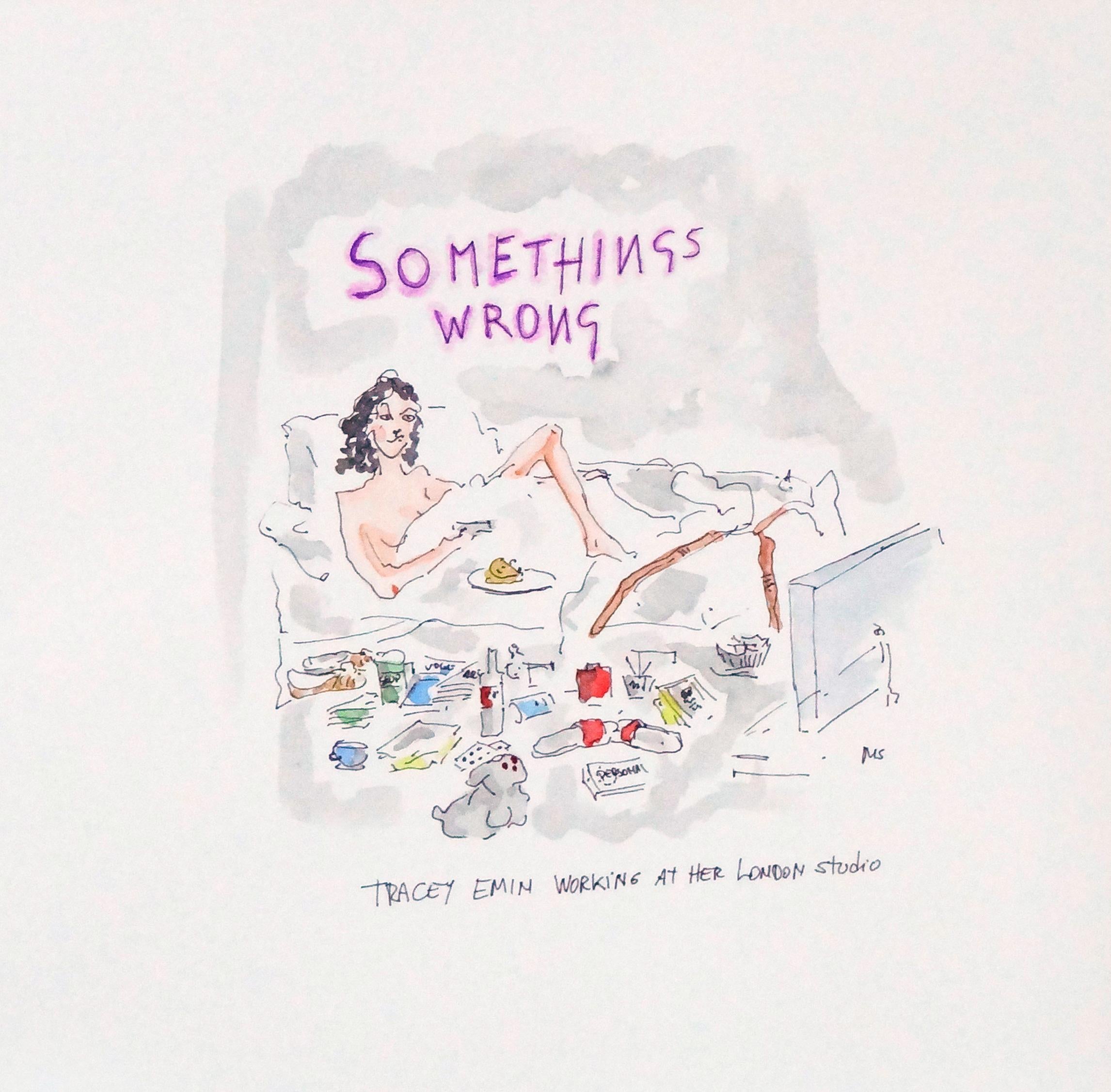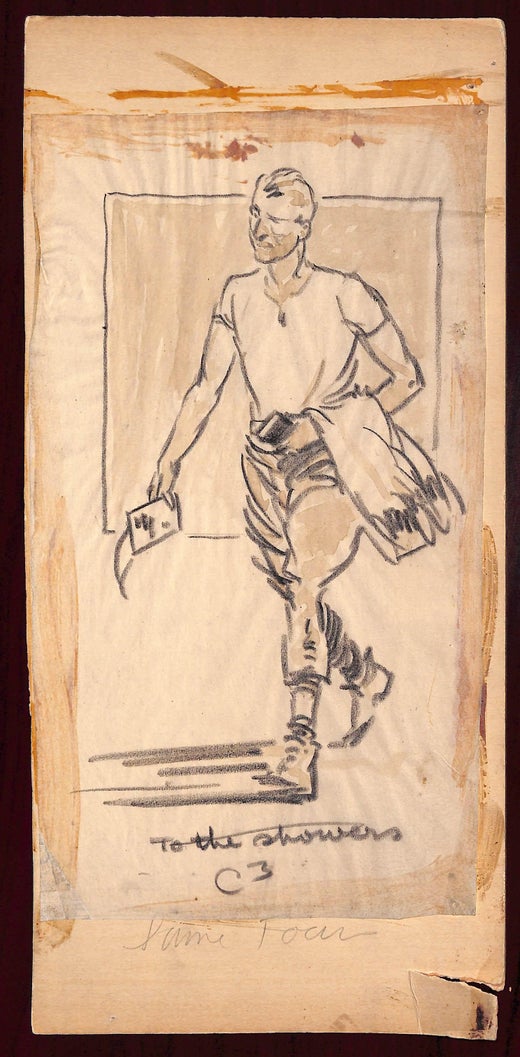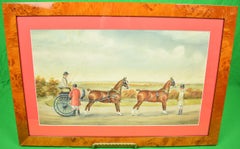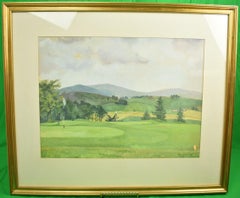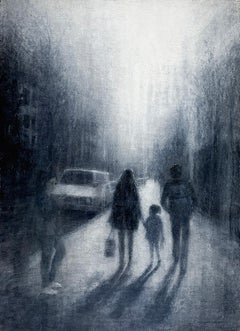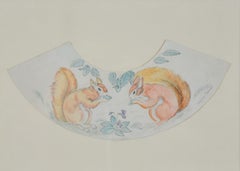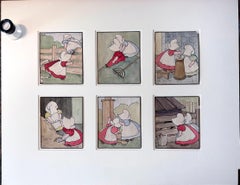Items Similar to "Gentleman Jockey" 1939 by Paul Brown
Want more images or videos?
Request additional images or videos from the seller
1 of 11
Paul Desmond Brown"Gentleman Jockey" 1939 by Paul Brown1939
1939
About the Item
Art Sz:12 1/2"H x 16 3/8"W
Frame Sz: 17 7/8"H x 21 3/8"W
- Creator:Paul Desmond Brown (1893 - 1958, American)
- Creation Year:1939
- Dimensions:Height: 12.5 in (31.75 cm)Width: 16.5 in (41.91 cm)
- Medium:
- Period:
- Condition:
- Gallery Location:Bristol, CT
- Reference Number:Seller: 367271stDibs: LU126015510742
Paul Brown was an American illustrator of equestrian subjects although he was never formally trained as an artist. He is primarily known for his paintings, drawings and sketches of horses and equestrian sports. He is also well-known for his over three decades of illustrations for Brooks Brothers catalogs including more than one-thousand drawings. These illustrations made him a major influence on the image of urban males in twentieth-century America. With Paul Brown's art, color is only an occasional adjunct playing a very secondary role to the use of the hard-edged line. His style has a calculated simplicity, a casual appearance, but is very carefully contrived and executed with much authority. Illustrations by Paul Brown drew heavily upon copious notes and studies, often aided by photography as well as photographic memory. Brown preferred to draw with a pencil and, although not fond of painting, successfully employed a technique of using tinted paper with white highlights. During the heyday of polo in the 1930's, Paul Brown immortalized the sport for many in his illustrations for Peter Vischer's POLO magazine, of which Brown was a member of the editorial board. "Today those historical moments are often taken for granted, as is much of the past, but we still have Paul Brown's unique legacy to breathe life into those special times." Illustrating and writing books became Brown's main occupation, and he worked with the major publishers of the day including The Derrydale Press, Charles Scribner's Sons, Dodd, Mead & Company.
About the Seller
4.8
Vetted Professional Seller
Every seller passes strict standards for authenticity and reliability
Established in 2000
1stDibs seller since 2019
119 sales on 1stDibs
Typical response time: 2 hours
- ShippingRetrieving quote...Shipping from: Bristol, CT
- Return Policy
Authenticity Guarantee
In the unlikely event there’s an issue with an item’s authenticity, contact us within 1 year for a full refund. DetailsMoney-Back Guarantee
If your item is not as described, is damaged in transit, or does not arrive, contact us within 7 days for a full refund. Details24-Hour Cancellation
You have a 24-hour grace period in which to reconsider your purchase, with no questions asked.Vetted Professional Sellers
Our world-class sellers must adhere to strict standards for service and quality, maintaining the integrity of our listings.Price-Match Guarantee
If you find that a seller listed the same item for a lower price elsewhere, we’ll match it.Trusted Global Delivery
Our best-in-class carrier network provides specialized shipping options worldwide, including custom delivery.More From This Seller
View AllCoaching Scene Watercolour by H. W. Standing (1894-1931)
By H. W. Standing
Located in Bristol, CT
Art Sz: 14 1/2"H x 21 1/4"W
Frame Sz: 20 3/4"H x 27 3/4"W
Henry William Standing (British,1894 -1931)
Category
1890s Figurative Drawings and Watercolors
Materials
Watercolor
Lady Driving A 2-Horse Tandem Hitch c1929 Gouache by H. W. Standing (1894- 1931)
By H. W. Standing
Located in Bristol, CT
Art Sz: 12 3/4"H x 21 1/2"W
Frame Sz: 18 3/4"H x 27 3/4"W
Henry William Standing (British,1894 -1931)
Category
Early 20th Century Figurative Drawings and Watercolors
Materials
Gouache
"Close To The Green" Golf Course Watercolour & Gouache Ex-Mary S.B. Braga Estate
Located in Bristol, CT
Art Sz: 18 1/2"H x 24 3/4"W
Frame Sz: 29 1/2"H x 35"W
Ex- Mary S.B. Braga Estate
Indistinctly Signed LR
Category
20th Century Figurative Drawings and Watercolors
Materials
Watercolor
Hardys Favourite Wet Trout Fly Watercolour by Harry Spencer
Located in Bristol, CT
Art Sz: 4 1/2"D
Frame Sz: 5 3/4"Sq.
c1999
Harry Spencer
Category
1990s Figurative Drawings and Watercolors
Materials
Watercolor
"Against The Boards" Original circa 1975 Polo Pastel Gouache By Eric Meade-King
By Eric Meade-King
Located in Bristol, CT
Image Sz: 10 1/2"H x 17"W
Frame Sz w/ French mat: 18"H x 24 3/4"W
Eric Meade-King (1911-1987) studied at the Westminster School of Art and later h...
Category
1970s Figurative Drawings and Watercolors
Materials
Gouache, Watercolor
Lanvin Of Paris Original c1950s Advertising Watercolor Artwork
By Alexander Warren Montel
Located in Bristol, CT
Sz: 10 3/4"H x 18 3/4"W
Alexander Warren Montel (1921-2002)
Fashion illustrator for House of Lanvin Paris in the 1950s featured in Harper's Bazaar
Four Perfume Chairs
Category
1950s Figurative Drawings and Watercolors
Materials
Watercolor
You May Also Like
Family Time (Blue Grey Watercolor Cityscape with Impressionistic Family Figures)
By Susan Hope Fogel
Located in Hudson, NY
Tonal, impressionist figurative watercolor by Susan Hope Fogel
watercolor on Arches heavy-weight paper
35.5 x 50.75 x 2 inches in a dark silver shadowbox frame with anti-reflective, ...
Category
2010s Contemporary Figurative Paintings
Materials
Watercolor, Gouache
Decorative Squirrel Design, Pencil and Watercolour on Paper
By Georges Manzana Pissarro
Located in London, GB
Decorative Squirrel Design by Georges Manzana Pissarro (1871-1961)
Pencil and watercolour on paper
45.4 x 32.4 cm (17 ⁷/₈ x 12 ³/₄)
Signed lower right Manzana Pissarro
This work is ...
Category
1920s Art Deco Animal Drawings and Watercolors
Materials
Paper, Watercolor, Pencil
The Sunbonnet Babies - Modernist Female Artist
Located in Miami, FL
Bertha Corbett Melcher's The Sunbonnet Babies, with their flat, minimalist, semi-abstract, and symbolic style, are an early example of American Modernism/Surrealism by a lesser-known female artist/illustrator. The present work demonstrates a delicate balance between abstraction and representation and between the commonplace and the mysterious. Her signature use of a hat or sunbonnet to hide the identity of her subjects is a big conceptual and visual idea that has been overlooked in the fine art canon. The exact meaning of this is unknown, but 120 years after they were done, it resonates as somewhat surrealistic. Her work is a contradiction. She shows innocent children engaging in everyday activity but are depicted in vail of mystery. Why does she not show the faces of her subjects?
Watercolor on paper (each)
Six drawings in all on one board. 6-1/8 x 5 inches (15.6 x 12.7 cm) (each)
One signed; two initialed; three not signed.
Six drawing in all on one board. 6-1/8 x 5 inches (15.6 x 12.7 cm) (each)
One signed; two initialed; three not signed
The Sunbonnet Babies characters were created by illustration Bertha L. Corbett when she was challenged to create a faceless character who nonetheless was engaging and appealing. The characters were a wild hit and appeared in books, comics, and popular collectibles. They also became a popular motif in quilting. Few of Corbett's original drawings for the babies are known to survive, making this a rare offering.
From: Wikipedia
Sunbonnet Babies are characters created by commercial artist Bertha Corbett Melcher (1872–1950). Sunbonnet Babies featured two girls in pastel colored dresses with their faces covered by sunbonnets. Sunbonnet Babies appeared in books, illustrations and advertisements between the years of 1900 and 1930. Sunbonnet Babies were later used as a popular quilting pattern also known as Sunbonnet Sue.[1] Melcher created a male version of the Sunbonnet Babies, named the 'Overall Boys' in 1905.[2][3]
History
Bertha L. Corbett Melcher
Sunbonnet Babies were created by Bertha Corbett Melcher (1872–1950).[4] Melcher was born in Denver and moved with her family to Minneapolis in the 1880s. Melcher attended art school in Minneapolis with plans to become a commercial artist.[5] She may have also studied with Howard Pyle.[6] By the 1920s, Melcher had moved to Topanga, California.[7][4]
Melcher started drawing the Sunbonnet Babies in 1897. The origin of the signature style of the faces being covered by sunbonnets is contested by different members of Melcher's family and by Melcher herself. In an interview, Melcher's brother said their mother suggested Bertha avoid the difficulty of drawing faces by covering them with sunbonnets.[4] Melcher herself said that covering faces allowed her to communicate with body position.[4] Melcher has also said that the design came about in "answer to a friend’s challenge to convey emotion without a face."[2]
Melcher published her first book, The Sun-Bonnet Babies in 1900.[3] Later, she shopped her illustrations to publisher Rand McNally of Chicago, and nine subsequent books were written by Eulalie Osgood Grover and illustrated by Bertha Corbett. In 1905, Melcher wrote The Overall Boys.[3] Many of these books were used as primers and used widely in primary schools in the midwest.
Melcher used the sunbonnet babies in advertising and later established the Sunbonnet Babies Company. She started a studio to illustrate and create merchandise of the Sunbonnet Babies.[2] The characters also appeared in a comic strip.[2]
Quilting
Melcher herself did not originate the use of the sunbonnet babies as quilting pattern. The Sunbonnet Babies quilting pattern appeared in textile art 1910's in the Ladies Home Journal 1911–1912 in a quilt stitched by Marie Webster. The pattern was popular during the Great Depression. In the American South, it was often known as "Dutch Doll" until the 1970s.[3] There was also a quilt pattern based on the "Overall Boys," known by the various names including “Overall Bill, “Overall Andy,” “Sunbonnet Sam,” “Suspender Sam,” “Fisherman Jim."[3] Many patterns for quilts and sewing were designed by Ruby Short McKim and published in nationally syndicated newspapers.[8]
Sunbonnet Sue became symbolic of 'female innocence and docility'.[9] Linda Pershing collected accounts from women quilters who depicted 'Sues' doing activities such as smoking, wearing more revealing clothing, and subverting feminine stereotypes.[10] In 1979, the “Seamsters Union Local #500," a group of quilters from Lawrence, Kansas, created “The Sun Sets on Sunbonnet Sue," a quilt depicting the character murdered in a variety of ways.[3]
Collectibles
Sunbonnet Babies merchandise includes school books, valentines cards, postcards, china, and quilts.[2][5][11]
Sunbonnet Babies were adapted into three dimensional porcelain collectibles and pottery made by Royal Bayreuth Company in the early 1900s. The Royal Bayreuth China...
Category
Early 1900s American Modern Figurative Drawings and Watercolors
Materials
Paper, Watercolor
Untitled
By David Remfry
Located in Boca Raton, FL
Whether obscured by the smoky nightclub lighting or enlivened by the strong color of the Mardi Gras dancers, David Remfry’s life-size watercolors evoke a kaleidoscope of movement. M...
Category
21st Century and Contemporary Contemporary Figurative Drawings and Water...
Materials
Watercolor, Archival Paper
$22,000
Concours de Chiens au Promenade by Otto Eerelman
By Otto Eerelman
Located in New Orleans, LA
Otto Eerelman
1839-1926 Dutch
Concours de Chiens au Promenade
Watercolor on paper
Signed “O. Eerelman 1904” (lower left)
A tour de force watercolor by celebrated Dutch artist Otto Eerelman, one of 19th-century Europe's most popular and important animal portraitists, this charming composition captures a bustling cross-section of fashionable elites walking their equally fashionable canine companions. Eerleman takes care to render the detailed attire of his subjects, complete with plumed hats and layers of lace trim. The artist paints the plethora of pets in equally painstaking detail, capturing the nuances of each different breed represented.
Eerelman mastered the art of depicting not only the dogs’ physical characteristics but also their unique expressions and personalities. His wealthy clientele would bring their pets to his home in The Hague where they would live for a period of time while having their portraits done, allowing for a remarkably true-to-life portrayal. This energetic watercolor, with its profusion of color and texture, harnesses the affluence of its subjects and the leisurely whimsy of their luxurious lives.
Hailing from Groningen, Netherlands, Eerelman was dubbed the “Northern Rembrandt” during his lifetime. He received his artistic training at the Academy Minerva in Groningen, the Royal Academy of Fine Arts in Antwerp and then private lessons in the studio of the great Lawrence Alma Tadema. He successfully captured the attention of the Dutch court, particularly Princess Wilhelmina...
Category
Early 20th Century Post-Impressionist Figurative Drawings and Watercolors
Materials
Paper, Watercolor
Artist Tracey Emin Working. Watercorlor on paper.
By Manuel Santelices
Located in Miami Beach, FL
Movies, TV and magazines are constant source of inspiration. Fame, as fleckring and shallow it can be sometimes, is very intriguing to him.
The worlds of fashion, society and pop cu...
Category
2010s Pop Art Figurative Drawings and Watercolors
Materials
Ink, Watercolor, Gouache, Archival Paper
